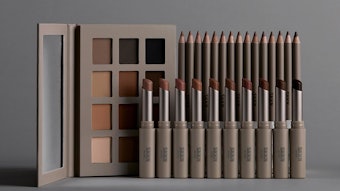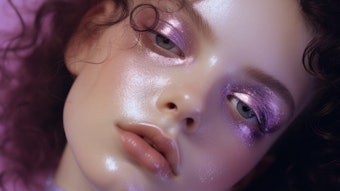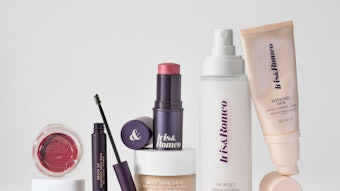
Editor's note: While the "Read the Label" series provides an overview of the ingredients cosmetic manufacturers use and their related claims, without use levels or access to clinical studies, the author is drawing her own conclusions based on speculation—albeit from training, formulating experience and, in some instances, evidence in the literature. The following is offered for your consideration and further verification.
Victoria Feebery and Alice Rhodes founded (and self-funded!) Depixym after working in the beauty sector for several years. Throughout their time in the industry, they partnered with exciting and innovative brands, which led to creative and fun new product launches, but the pair self-confess to occasionally becoming tired of the obsessive focus on product positioning in the market. This approach often blindsided brands to create products that conform to their positioning, rather than conforming to what their consumers want.
See related: Read the Label; Augustinus Bader's The Body Cream
Depixym was reportedly created to be fundamentally inclusive to all. The brand strongly believes in no positioning, no gender, no labels—just simply great products that anyone can use. The brand encourages creativity and posts pictures on social media of end-users creating flamboyant and wonderful looks using its products. Depixym started with a range of different colored cosmetic emulsions that can be applied to different parts of the body, e.g., the lips, eyes and cheeks. Each emulsion is packed within an aluminum tube with a plastic cap, both of which can be recycled.
The brand claims the cosmetic emulsions are long-wearing, non-transfer, vegan, cruelty-free, matte, blendable, mixable, waterproof… the list goes on. Each product contains high levels of pigment to create a strong impact but can be worn in a subtle style or can be buildable to create bold colors.
To use the product, the consumer dispenses a small amount from the tube directly onto clean hands and applies it using fingertips or a makeup brush to the lips, cheeks or eyes, and allow a few seconds for the product to dry. To remove the product, an oil-based cleanser is recommended.
Ingredients
The following ingredients in bold are ones that I believe are contributing to the performance and claims of the products; note this INCI listing is taken from cosmetic emulsion #1183: Isododecane, Isohexadecane, Disteardimonium Hectorite, Synthetic Fluorphlogopite, Dimethicone, Oleic/Linoleic/Linolenic Polyglycerides, Sucrose Tetrastearate Triacetate, VP/Eicosene Copolymer, Trimethylsiloxysilicate, Silica, Alumina, Butylene/Ethylene/Styrene Copolymer, Dimethicone Crosspolymer, Dimethicone/Vinyl Dimethicone Crosspolymer, Ethylene/Propylene/Styrene Copolymer, Isopropyl Titanium Triisostearate, Lecithin, Mangifera Indica (Mango) Seed Butter, Polyhydroxystearic Acid, Propylene Carbonate, Silica Dimethyl Silylate, Silica Silylate, Tocopheryl Acetate, Triethoxycaprylylsilane, CI 77891 (Titanium Dioxide), CI 77491 (Iron Oxides), CI 77492 (Iron Oxides), CI 77499 (Iron Oxides), CI 77007 (Ultramarines), CI 19140 (Yellow 5 Lake), CI 42090 (Blue 1 Lake), CI 16032 (Red 40 Lake).
Isododecane
This ingredient is an ideal solvent for color cosmetics as it has excellent solubilization properties and will flash off quickly once users apply the product for a quick-drying effect. Isododecane itself is a clear and colorless liquid that has the same viscosity as water, and it can be used across a broad spectrum of applications.
Isohexadecane
Isohexadecane (IHD) is very similar to isododecane (IDD) but it has a slightly higher refractive index, so it can add more shine to a product (depending on the use level). Like IDD, IHD will flash off the skin at room temperature for quick drying results but it is slightly less volatile than IDD.
Disteardimonium Hectorite
Often found in a blend with propylene carbonate, this ingredient helps with product blending and spreadability. It predominantly provides suspension through a "house of cards" clay structure/rheology that enables even pigment dispersion throughout the product.
Synthetic Fluorphlogopite
This synthetic pigment is an alternative to mica and has a soft, small particle size shimmer. Like cocoa, however, mica can have a negative perception, having been linked in some cases to child labor; although manufacturers, producers and buyers are implementing steps such as paying fair wages, building schools for children and helping to fund their education.
Dimethicone
Dimethicone creates a soft, liquid texture. Dimethicone is a general INCI name for a variety of silicone products; usually a chemical structure with methyl groups attached to a siloxane backbone. Depending on the chain length and positioning of the methyl groups, this affects the viscosity of the product. In the case of this product, I would assume it’s a lower chained carbon with perhaps a viscosity between 50-350.
Dimethicones are mostly used for their skin feel but they do have other benefits. The lower viscosity grades, such as 0.65 cSt, can be extremely volatile and can help a product to dry quickly. A 350cSt viscosity grade is commonly used. This has a similar viscosity to water, just slightly thicker, which can produce rich, soft and glossy emulsions.
Trimethylsiloxysilicate
Known as TMS, this silicone resin creates long-lasting results. It is often used in color cosmetics and sun care to waterproof products, and supports long-wear claims.
Dimethicone Crosspolymer
Dimethicone crosspolymers are used mostly for their cushioning effect. They help to create rich, bouncy textures and aid pigment dispersion. They can possess excellent skin feel and have strong mattifying/blurring effects.
Lecithin
This ingredient is a naturally derived emulsifier/stabilizer that is ideal for sensitive skin. It is quite often derived from soybean and has anti-inflammatory properties, which help to soothe irritated skin and reduce potential irritation from other ingredients used in the formula. Studies have shown that lecithin reduces the stinging effect that some sensitive skin users can experience when applying products. The ingredient also can be used to form encapsulates.
CI 77891 (Titanium Dioxide), CI 77491 (Iron Oxides) ...
This blend of colored pigments (see complete list, bolded above) is responsible for making up the pink color of cosmetic emulsion #1183.
Depixym’s range of cosmetic emulsions is available to buy online at £18 for 12 mL (0.4 fl. oz). In this author's view, a little goes a long way.










